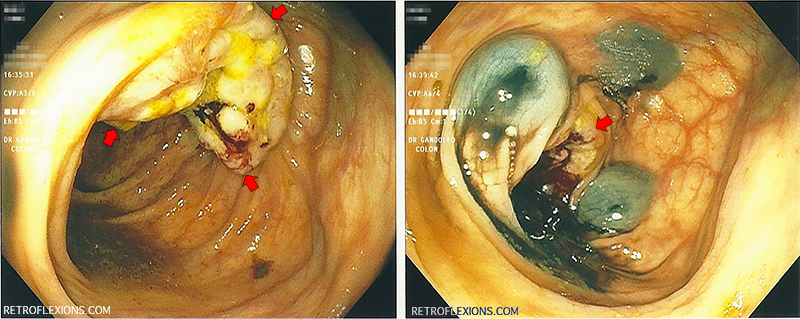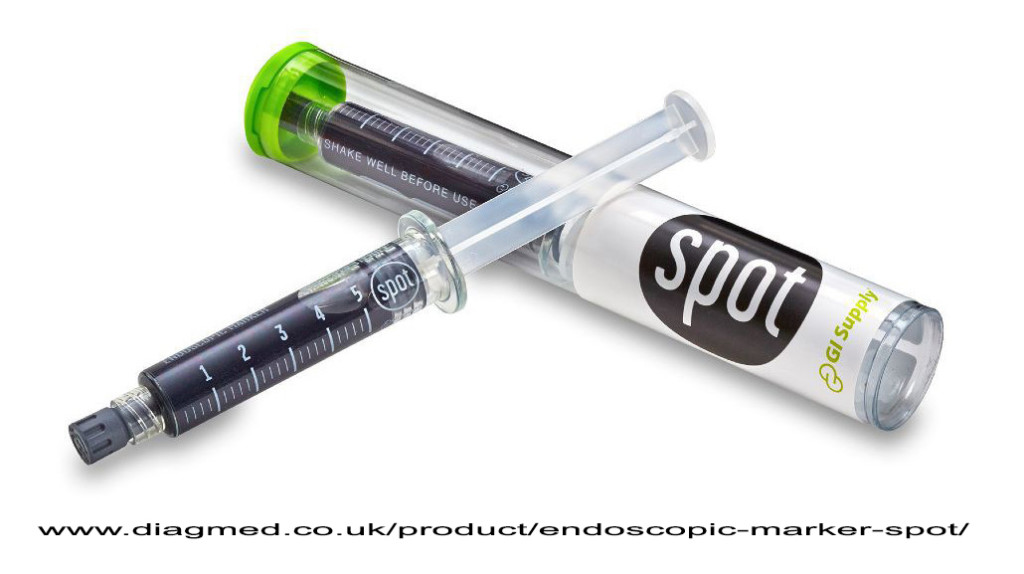Everywhere you go, you can see people from all walks of life sporting some pretty cool tattoos. Tattoos are so popular nowadays that they’re almost conformist. I consider myself really hip since I don’t have any tattoos…how avant-garde! However, that doesn’t mean I don’t appreciate good ink when I see it. As a matter of fact, I even dabble as a tattooist sometimes…

(L): ulcerated colon mass (adenocarcinoma) near the hepatic flexure. Red arrows show the edges of the cancer; (R): Appearance of the colon after three tattoo marks placed. Red arrow shows the location of the mass.
It is common practice to leave a permanent tattoo at the site of significant pathology (such as a large polyp or tumor) inside the GI tract. We typically use a substance called Spot, which consists of microscopic carbon particles in a suspension. When injected into tissue it becomes a permanent mark that can be seen from the inside of the organ with the scope, and from the outside of the organ by a surgeon. Leaving a tattoo is especially important when finding a colon tumor during colonoscopy. The tattoo will make it much easier for the surgeon to find the tumor quickly and it removes any uncertainty as to the location of the lesion during the operation.
It is important to make sure the tattoo is injected into the submucosal space only, and it must not be injected deeper since it will penetrate the colon wall and stain other structures unintentionally, somewhat defeating the purpose of the tattoo. So don’t just stick the needle straight into the mucosa and spray! The secret is to insert the needle into the mucosa tangentially and then pull up and away to tent the mucosa and then inject slowly into the submucosa. If you don’t see an immediate bleb then reposition and try again. Traditionally, three separate marks are made at about 120 degrees apart, ensuring that a tattoo will be visible to the surgeon from any angle.
While it’s never a good thing to hear that you needed a tattoo during a colonoscopy since it implies that something abnormal was found, and it’s not even the kind of tattoo that you can (easily) show your friends, tattoos are often a very important part of endoscopy and therefore they are worth doing right!
If you enjoyed this article, sign up for our free newsletter and never miss a post!

